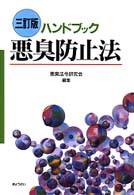基本説明
In this pioneering study spoken languages are compared with those that are signed, in order to seek the universal properties of human languages.
Full Description
Sign languages are of great interest to linguists, because while they are the product of the same brain, their physical transmission differs greatly from that of spoken languages. In this 2006 study, Wendy Sandler and Diane Lillo-Martin compare sign languages with spoken languages, in order to seek the universal properties they share. Drawing on general linguistic theory, they describe and analyze sign language structure, showing linguistic universals in the phonology, morphology, and syntax of sign language, while also revealing non-universal aspects of its structure that must be attributed to its physical transmission system. No prior background in sign language linguistics is assumed, and numerous pictures are provided to make descriptions of signs and facial expressions accessible to readers. Engaging and informative, Sign Language and Linguistic Universals will be invaluable to linguists, psychologists, and all those interested in sign languages, linguistic theory and the universal properties of human languages.
Contents
Part I. Introduction: 1. One human language or two?; Part II. Morphology: 2. Morphology: introduction; 3. Inflectional morphology; 4. Derivational morphology; 5. Classifier constructions; 6. Entering the lexicon: lexicalization, back formation and cross-modal borrowing; 7. Morphology: conclusion; Part III. Phonology: 8. Meaningless linguistic elements and how they pattern; 9. Sequentiality and simultaneity in sign language phonology; 10. Hand configuration; 11. Location: feature content and segmental status; 12. The non-dominant hand in the sign language lexicon; 13. Movement; 14. Is there a syllable in sign language?; 15. Prosody; 16. Phonology: theoretical implications; Part IV. Syntax: 17. Syntax: introduction; 18. Clausal structure; 19. Clausal structure across sign languages; 20. Variations and extensions on basic sentence structures; 21. Pronouns; 22. Topic and focus; 23. WH-questions; 24. Syntax: summary and directions; Part V. Modality: 25. The effects of modality: linguistic universals and sign language universals.








